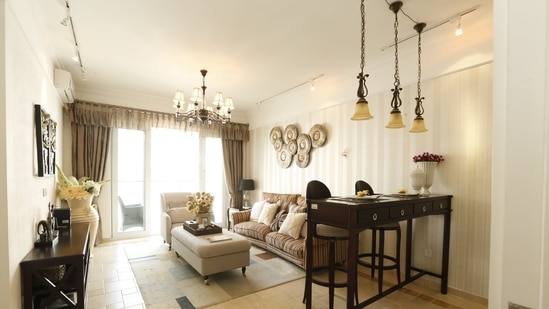Planning to pursue Interior Design as career? Check scope, eligibility, career options, salary expectation and more
Interior design has become a popular field in the last few years. If you’re a graduate looking to build a career in this industry, it’s important to understand the course structure, job opportunities available, eligibility conditions, and fee structure and salary expectations after completion of the course. This article will help you make informed decisions.
If you’re a graduate looking to build a career in this industry, it’s important to understand the course structure, job opportunities available, eligibility conditions, and fee structure and salary expectations after completion of the course.(Photo by Pixabay)
About the Course
An interior design course combines hands-on studio work with industry knowledge. Students participate in outdoor seminars, workshops, study tours, and internships to gain practical experience. The course usually takes three years, divided into six semesters. It focuses on designing spaces that positively impact people’s well-being, whether they are at work, home, or in recreational areas.
Scope of the Course
Interior design is a creative field with many opportunities. Graduates can pursue various roles, such as:
Project Managers
Greenfield Consultants
Product Designers
Kitchen Consultants
Set Designers
Residential and Commercial Interior Designers
Exhibition Designers
The curriculum is designed to be relevant to the industry, with a focus on sustainable and universal design. As India’s interior design sector grows, there is a high demand for professionals who can incorporate eco-friendly practices and modern technology into their designs. Globally, interior design is seen as a creative profession that is growing across the world.
Eligibility
Eligibility for interior design courses depends on the institution and the level of study:
B.Sc. in Interior Design: Requires completion of the 10+2 examination in any stream.
M.Sc. in Interior Design: Requires a graduation degree from any stream.
B.Voc. in Interior Design: Requires completion of the 10+2 examination or its equivalent in any stream.
These programs cover a wide range of topics, offering long-term career opportunities and the chance to pursue further studies internationally.
Career options
Interior design offers various career paths, including roles as interior designers, space planners, set designers, visual merchandisers, or project managers. Graduates can work in design firms, architectural companies, real estate developers, or start their own design practice. The job market for interior designers is strong, with many opportunities arising from ongoing urbanization, commercial growth, and changing consumer preferences.
Opportunities around the Globe
Interior design is a global industry with opportunities around the globe. Designers who understand international trends, cultures, and design practices are in high demand. Countries like the USA, UK, Italy, and Australia are known for their advanced design programs and thriving job markets. Gaining international experience can greatly enhance a designer’s portfolio and career prospects.
Indian Institutes to consider for Interior Design
National Academy of Fashion Design Institute (NAFDI), Mumbai
National Institute of Fashion Technology (NIFT)
Sir JJ School of Art, Mumbai
MIT Institute of Design, Pune
CEPT University, Ahmedabad
Aditya College of Architecture, Mumbai
National Institute of Design, Ahmedabad
Amity School of Design, Delhi
School of Design, CMR University, Bangalore
International Institutes to Consider for Interior Design
Parsons School of Design, USA
Royal College of Art, UK
Politecnico di Milano, Italy
Savannah College of Art and Design (SCAD), USA
RMIT University, Australia
Coventry University, Birmingham, UK
Purdue University, USA
Middlesex University, UK
Le Mark, Italy
Financial Aspects (Fee Structure/Grants/Scholarships)
The cost of studying interior design varies depending on the institution and country. In India, undergraduate programs cost between INR 2 to 10 lakhs per year, while graduate programs may cost between INR 5 to 15 lakhs annually. Internationally, fees range from USD 20,000 to 50,000 per year. However, many scholarships and grants are available for students who need financial assistance or meet specific criteria.
Salary Expectations
Salaries in interior design vary based on experience, location, and project type. In India, entry-level designers can expect to earn between INR 1.8 to 5 lakhs per year, while experienced professionals can earn more than INR 10 lakhs annually. Internationally, entry-level positions offer salaries of around USD 40,000 to 60,000 per year.
Conclusion
A career in interior design offers a mix of creativity, technical skills, and good earning potential. With a solid understanding of the industry, graduates can look forward to a rewarding and fulfilling profession that allows them to create beautiful and functional spaces. As the demand for interior designers continues to grow, it remains a promising career choice for those passionate about enhancing the quality of human life through design.
(Article is based on inputs by Ar. Paras Mehta, Director at Future Varsity Education Group, and Professor Ar. Rasika Chodankar, Aditya College of Architecture, Mumbai.)
Images are for reference only.Images and contents gathered automatic from google or 3rd party sources.All rights on the images and contents are with their legal original owners.


Comments are closed, but trackbacks and pingbacks are open.